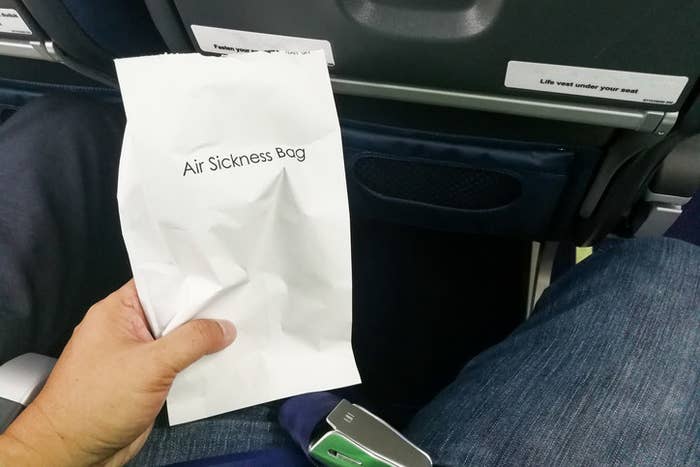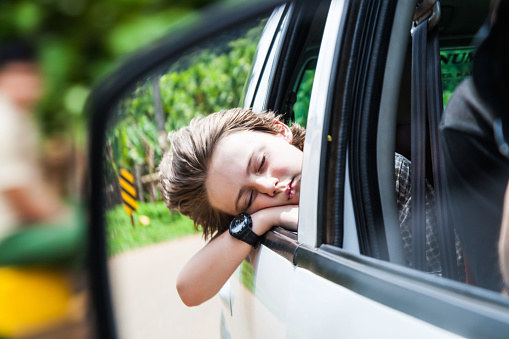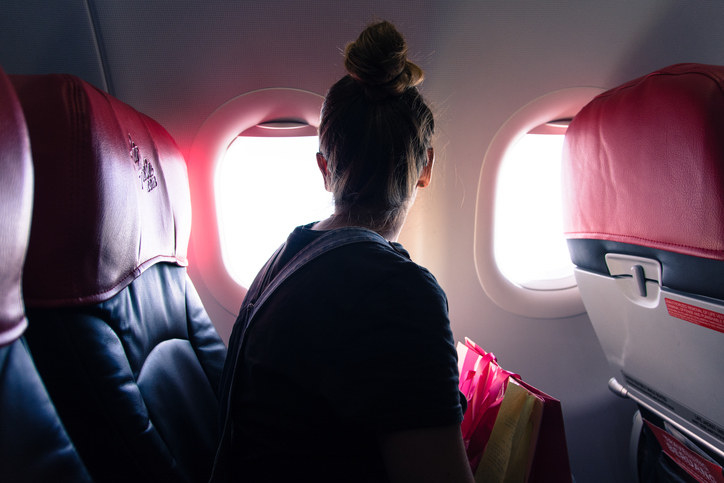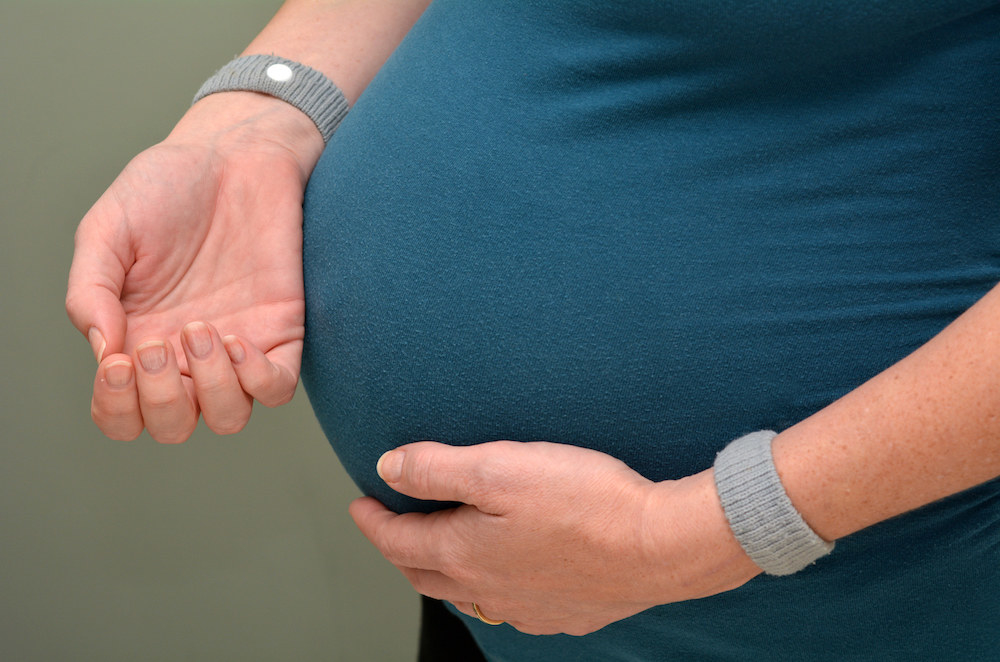If you've ever experienced motion sickness in a car, or on a plane or a boat, you know how miserable it can be.
One minute you're enjoying a ferry ride or playing a phone game in the backseat of a car and the next minute you're overwhelmed with nausea and dizziness. Motion sickness is no fun, especially when you're on a long trip and can't necessarily get off the thing that's moving.
But why does this actually happen and how can you prevent it from happening? We spoke to two experts to find out.

We spoke to Joanne Feldman, MD, polar expedition physician and assistant clinical professor at UCLA’s Department of Emergency Medicine and Jane Rosenman, MD, pediatrician at Mayo Clinic Children’s Center.
P.S. Motion sickness has several other names — kinetosis, travel sickness, car sickness, sea sickness — but we will refer to it as motion sickness in this article.
Motion sickness occurs when the three parts of our body that sense movement — the eyes, inner ear, and sensory nerves — send different signals to the brain.

Here's how these three systems sense movement and balance: "Your eyes allow you to see that you're moving, the nerves in the muscles and joints of your extremities allow you to feel that you're moving, and the inner ear has canals with fluid that moves around and this allows the body to perceive motion," Feldman says. All of these send the sensory information to your brain, which then tells you that you are moving.
Motion sickness typically occurs when only one or two of those centers (usually the inner ear) sense you are moving, Rosenman says, and the other(s) do not — so there's a mismatch in communication to the brain. "Your brain gets confused because it's getting mixed signals and sensing this abnormal movement, which results in nausea or vomiting," Feldman says.
Why? Well, this is just how the body responds to the conflicting sensory information, the experts say, and motion sickness is a complex syndrome with a variety of symptoms. These include dizziness, sweating, headache, fatigue, and general uneasiness. It can happens in cars, boats, planes, and also from 3D movies or video games (we'll explain that in a bit).
It often happens when our eyes are fixated on something that isn't moving, but our inner ear or body senses motion.
So if you're on a boat and you go below deck where you can’t see outside, then your eyes might tell your brain you aren't moving while your inner ear and body senses the rolling motions of the waves, Feldman says. The same thing can happen if you're on a bumpy car or plane ride and you aren't looking outside the window. This is why some people only get motion sickness while riding in cars, but not when they’re driving, Feldman says, because in the latter situation their eyes are on the road.
You can also get motion sickness when you are sitting still and playing video games, using virtual reality gear, or watching a 3D movie, Rosenman says. In this case, it's the reverse situation — your eyes are perceiving motion and telling the brain that you are moving, but your body and inner ear do not sense movement.
So that's why some people legitimately can't read in the car without feeling dizzy and sick.
"People often get it from reading in the car because their eyes are focusing on a steady thing, the book, but the inner ear senses motion, so your brain gets confused and you feel sick," Rosenman says. Some people can read on car or plane rides and they’re fine, others can’t, and that just means they’re more prone to motion sickness than other people. It totally depends on the person.
Unfortunately, this also means you can get motion sickness from staring at your phone or iPad or any other screen during a bumpy ride, even if you aren't reading anything. "Your eyes are still focused on a fixed object, so it's the same as reading a book and can also make you sick," Rosenman says. So even though your phone is a great way to pass the time on car and bus rides, it could also be a problem.
It's still a mystery why some people get motion sickness and some people don't — but it is more common in children.

Not everyone gets motion sickness under the same conditions. One person may not be able to get through one page without getting sick, while their friend can read an entire book while riding in the backseat. Likewise, some people may get sick on a short ferry ride while others can be on a boat all day and feel fine. "We have been studying motion sickness for years, and we still don’t know why certain people are more susceptible and others aren’t," Feldman says.
However, there is evidence that age is a risk factor. "It's most common among children ages two to twelve, which probably has something to do with the fact that they're brain is still developing," Rosenman says. Not to mention, kids are often preoccupied with books or screens while riding in the backseat. That being said, it generally does get better with age and people can kind of grow out of it, says Rosenman.
For people who are prone to motion sickness, it can make traveling unpleasant and nerve-wracking — and in turn, anxiety can make the motion sickness worse. So a person may feel nauseous as soon as they sit on an airplane, before it even starts moving.
You can prevent motion sickness by trying to get those three sensory systems in sync.

"The main goal is to get your eyesight correlated with what's going on in your inner ear and your body so there aren't conflicting signals going to the brain," Feldman says. If you're riding in a car, the experts suggest sitting in the front seat or next to a window, looking outside, avoiding books or screens, keeping the car properly ventilated and cool, and having water and light snacks on-hand.
The same goes for when you ride on a boat, but you'll also want to stay above deck if you can, and keep your eyes on the horizon or land. "The good news is that if you're on a longer boat trip, your body will eventually adjust to the motions and you'll get your 'sea legs' within about three days," Feldman says.
It's harder to control your environment on a plane, but you can try to get a seat that's in the middle of the craft near the wings, where it's most stable, and choose a window seat so you can look outside. "Before the plane ride, make sure to have a light meal, because an empty stomach can actually make motion sickness worse," Rosenman says.
There are also medications you can take before or during a ride if you anticipate getting sick — but they aren’t suitable for everyone.

Even though nausea is a main symptom of motion sickness, nausea drugs won’t really work because they don’t treat the underlying cause. "You need drugs that will help block or reduce information going into the inner ear that signals movement to the brain," Feldman says. There are a few drugs that do this by targeting receptors that stimulate the nerve from our inner ear to the brain. Nothing will completely “cure” motion sickness, but these meds can reduce symptoms.
Always consult your doctor or pharmacist before starting a new medication. Some of these medications can cause drowsiness, so they are not for anyone who is driving or operating heavy machinery, or pilots, captains, or crew. Here’s what Feldman recommends:
Over-the-counter:
-Dimenhydrinate (Dramamine, Gravol): take one hour before, suitable for children > 2
-Meclizine (Bonine, Dramamine Less Drowsy): take one hour before, suitable for > 12
-Cyclizine (Marezine): take 30 minutes before, suitable for children > 6
Prescription:
-Promethazine (Phenergan): comes in pill, suppository, and shot form
-Scopolamine (Transderm Scop patch): patch worn for three days
You might have to re-dose as needed, depending on the medication and instructions, but the important thing is to take these before you are in motion if you can, because it will be very difficult if you're already sick, says Feldman. You also have to be careful before administering these to children, Rosenman says, because most aren't suitable for children under 12 except Dramamine. Always read the medication label for instructions and proper dosing, and talk to your child's doctor if you have any questions.
There are also some ~natural~ treatment options and distraction methods that can help too.

Ginger chews, candy, and drinks are all very popular. "Ginger doesn't help prevent motion sickness, but it can help soothe the stomach and make you feel less ill," Feldman says. Distraction strategies can also be very useful. "Those car games like 'I Spy' or the alphabet game can help you and your kids look outside the window and get their minds off of feeling sick," Rosenman says. And of course, motion sickness will get better and eventually go away on its own after the motion stops.
As for those "motion sickness bracelets" that claim to relieve motion sickness symptoms by applying pressure to an acupuncture point on your wrist?

According to both experts, there's no science or medical literature backing them up, but the placebo effect can be very powerful if you think it helps. "Some people swear by them — so if they work for you and as long as it isn't a choking hazard for your kid, then it's fine to use," Rosenman says.
It’s true that motion sickness sucks. But, hey, just be glad you’re not an astronaut.
If you thought being on a bumpy boat ride was bad, just imagine being stuck on a space shuttle in zero gravity. "Space sickness," or space adaptation syndrome, is probably the worst kind of motion sickness. "Being weightless is so discombobulating and your sense of movement gets completely messed up — our brains have no idea what's going on," Feldman says. Luckily, most astronauts adapt a few days in.
Sure, space sickness is rare since there aren't that many astronauts out there, but this could also happen to anyone who goes on one of those zero gravity simulation flights (i.e. Vanessa Grimaldi on the Bachelor). That's why NASA's first zero-G aircraft was called the "vomit comet," Feldman says.
